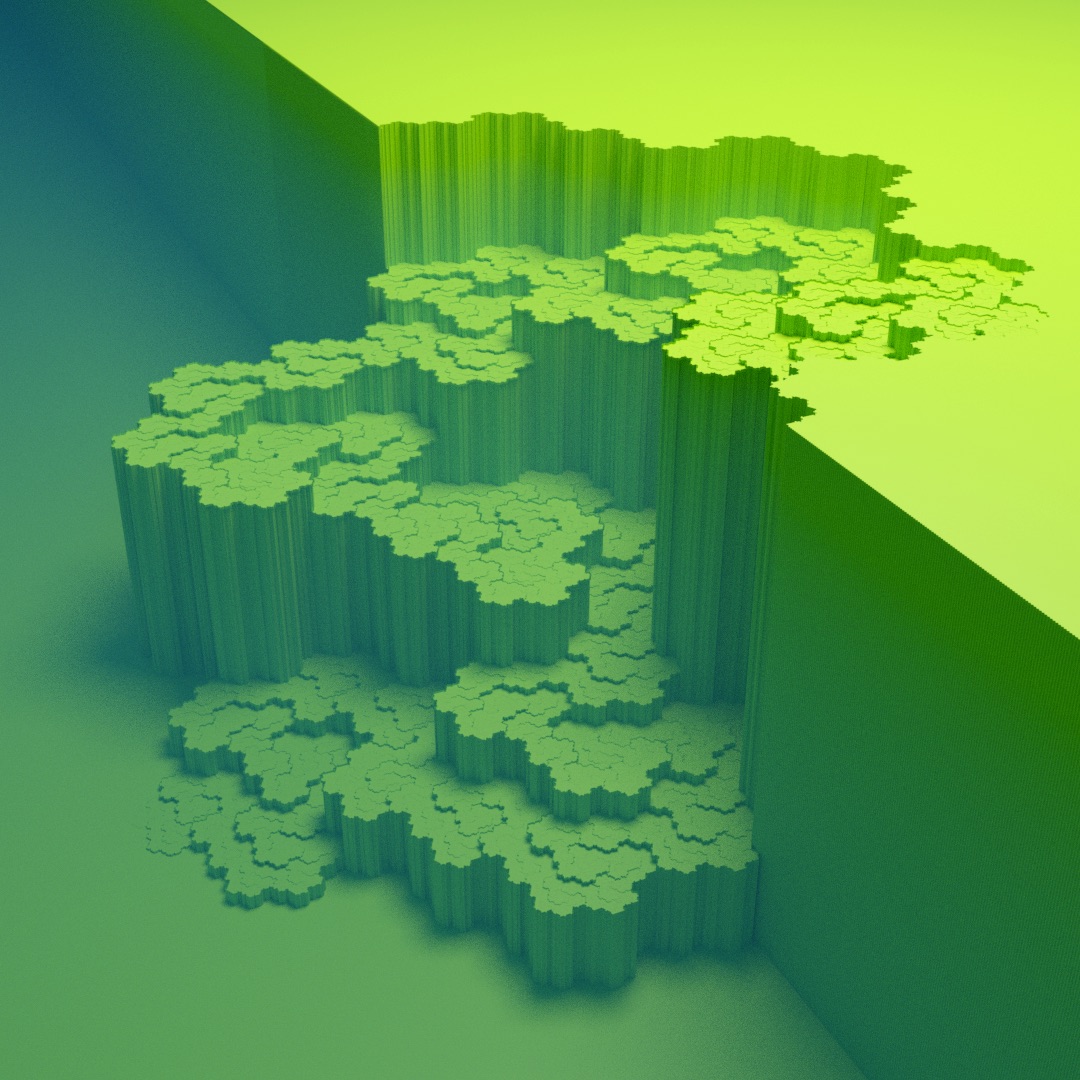Table of Contents
Wide, crooked, self-avoiding plane-filling trails
On this page we see plane-filling trails visualizing the wide but crooked, self-avoiding Rauzy Triangle, Terdragon, and Gosper curves. These curves are somewhat of a paradox. They are crooked: their images resemble polygons whose corners turned into logarithmic spirals that are infinitely intertwined with those of neighbouring sections of the curve. However, due to the extreme shrink rate of those spirals, we do not see them in the pictures. The pictures show some of the most-rounded plane-filling curves that exist: the Rauzy Triangle and Gosper curves look like they may be as close as one can get to recursively packing the plane with spirals and disks, respectively, with the Rauzy Triangle curve showing a very gentle progression of spirals of different sizes. The Terdragon, too, shows a nice balance between going straight and veering left and right to fill the plane.
Rauzy Triangle curve
Definition: (1,tan(α),1,1)(-χ,χ tan(α),1,1)(2/(χ-1),0,-1,-1), where χ≈1.83929 is the Tribonacci constant (the real root of χ3-χ2-χ-1) and tan(α)=√(1+2/χ). An equivalent definition swaps and reflects the first two segments: (-χ,χ tan(α),-1,-1)(1,tan(α),-1,-1)(2/(χ-1),0,-1,-1)
This curve is defined by three segments whose squared lengths (areas) have ratio 1:χ2:χ. The curve fills half, that is, a roughly triangular section, of the Rauzy fractal.
Knuth's Terdragon curve
Gosper's "Flowsnake" curve
Definition: Δ(1,0,0,1,1)(0,-1,0,-1,-1)(-1,0,0,-1,-1)(0,0,1,1,1)(1,0,0,1,1),(1,0,0,1,1)(0,0,-1,-1,-1)
Gosper's flowsnake, filling what is known as a “Gosper island”.


